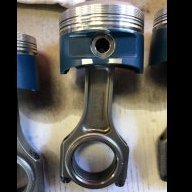Does The Stock R34 Gt-r Can Drift In Awd?
Announcements
-
Similar Content
-
Latest Posts
-
By PotatoCake · Posted
You have just offended every teenage boy in America -
Structured text and other high level PLC programing languages are not allowable in Functional Safety. They are very difficult to audit. My PLC stuff is almost exclusively oriented towards Burner Management Systems which are a particularly pernicious form of Safety Instrumented System, when implemented in an SPLC. Even the part of the code written to work in the non-safety logic part of the PLC, like with a Siemens S7-1500 series, still needs to be treated as if it was safety code, with access restrictions, code fingreprints and the like. And Allen Bradley can go EABODs. They ae full of shit. They have this whole lie going on where they say if you use a ControlLogix controller and its IO, and then just duplicate the IOs (ie, run in series or parallel depending on type, to try to make it "fail safe") and "use these programming styles and place these restrictions on what you do" that you can achieve SIL2. What a load of crap. They just get away with it because no-one in the US seems to understand the first thing about Functional Safety and carries on as if all they have to do is buy only SIL2 rated equipment and hey presto, it's a SIL2 system. Idiots. /rant
-
If you're really considering leaving it, a great question to ask is, is the magnet going to stick to the sump? The answer to the above is the same answer towards if I'd have any level of comfort leaving it... Personally, based on the cost of a motor if the magnet were to cause damage, I'd be fishing it out either way. Use the methods in here. It fit in through the plug hole, it'll come out. PS, get a small actuatable claw for a bore scope. OR if you know a vet, they have really cool controllable scopes with hooks on the end. Supposedly they're like playing a video game. Ask if they can acquire you one of their scopes... Engine oil after all is just a different type of lube right? Will only make it easier on the next dog or cat...
-
All other (Boolean) logic functions though, are just built on those blocks above. Which does give you a lot of functionality in logic. It is basing that on using thresholds with analogue signals like GTS alluded to. Not having things like timers will make it less useful for some of the ramp up logic you'd want, and again, on Haltecs capacity specifically, I'm not across anymore what you can / can't do with different tables. I'm assuming, with your logic you want to implement, not only do you want your timing safeties, you're wanting to be able to derive the duty cycle for your solenoid, to maintain I'm assuming 175PSi? Or are you using a standalone WMI controller to maintain the DC correct, and you just want the Haltech working out which fuelling maps you should be on?
-
It doesn't seem to follow revs. Oddly it seems to follow TPS a little bit from what I can see, but with some delay a bit. IE end of the graph, when he lets off throttle fully, pressure drops a lot, then slowly builds back up, but rpm is on a nice cruisey drop off. I do agree though, it seems very electrically.
-






Recommended Posts
Create an account or sign in to comment
You need to be a member in order to leave a comment
Create an account
Sign up for a new account in our community. It's easy!
Register a new accountSign in
Already have an account? Sign in here.
Sign In Now